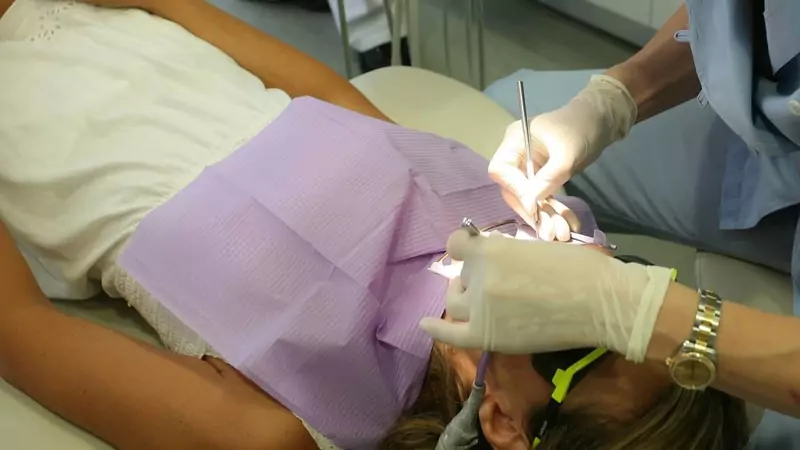Abscessed Tooth
An abscessed tooth is a condition of accumulation of inflammation caused by an infection of the tooth or gum. An abscess usually develops as a result of inadequate oral care. Abscess causes some discomfort, especially pain, in the teeth and gums (gingival abscess) of the person. In these cases, the patient may need pain relievers such as ADA approved; KANK-A Mouth Pain Liquid, and Benzodent Dental Pain Relieving Cream.
What Causes an Abscessed Tooth?
Abscesses form as a result of bacterial infections that develop in the teeth or gums. A tooth abscess is the body’s response to bacteria.
Food residues on teeth that are not cleaned properly cause tooth decay. The infection spreads when the blood cells come into contact with the infected area. Thus, the infection descends to the root of the tooth and causes an abscess.
Different Kinds of Tooth Abscesses
There are two groups of abscesses; abscesses of the root of the teeth and abscesses between the teeth. The abscess of the root of the tooth is the most common type of abscess. These abscesses usually occur as a result of insufficient oral care and untreated dental caries. However, abscesses between the teeth mostly form when the person doesn’t clean adequately the food residues between the teeth.
Signs and Symptoms of Dental Abscess
Inflammation in the abscess of the tooth causes swelling of the gum. The gingiva becomes red, bleeding, and edematous when it swells. Initially, the gum (gingiva) may heal with regular brushing, but if the abscess progresses, it will need gingival treatment.
The main symptoms of tooth abscess are; sensitivity to hot and cold, pain when chewing and biting, and swelling of the face or cheek. A tooth abscess can also cause fever, swelling in the neck, and pain in the teeth. In some cases, a tooth abscess may present with neck, ear, and jawbone pain.
The tooth abscess may burst, and this time the inflammation accumulated in the area will drain. In case of eruption of the tooth abscess, it is necessary to go to the dentist because of the possibility of the infection becoming chronic.
In summary, we can list the signs and symptoms of tooth abscess as follows:
Persistent pain in the tooth,
Sensitivity of teeth to hot or cold food,
Increased pain in the tooth while eating,
Face and neck swelling due to abscess,
Fever rising.
How is an Abscessed Tooth Diagnosed?
The first thing that the dentist requests from the person who comes with the complaint of an abscess of the tooth is a dental X-ray. Thus, the dentist determines the location, shape, and size of the infection and makes a treatment plan. In this respect, a dental X-ray is a very important imaging test in the diagnosis of dental abscesses.
Treatment for Abscessed Tooth
If an abscess has formed in the tooth, the treatment starts with a one-week antibiotic use. Thus, it aims to reduce the inflammation in the abscess. If the tooth abscess does not go away with antibiotics or if there is no decrease in swelling and inflammation, the dentist punctures the inflamed area and drains the abscess.
For abscesses formed between teeth, the dentist hygienically cleans the area and empties the pus in the gum. In cases where the abscess is difficult to drain, the dentist drains it by surgery. Then, the dentist cleans the surface of the tooth root and gingiva so that the abscess does not recur. While this procedure is being applied, the patient does not feel pain as the area is anesthetized.
The dentist (endodontist) usually applies root canal treatment for abscesses formed in the root of the tooth. Sometimes, root canal treatment alone may not be sufficient for tooth root abscesses.
If the infection persists, post-root canal treatments will be necessary to remove the inflamed tissue. Thus, the dentist cleans the tip of the infected tooth root surgically. Even with surgery, if there is no result, the dentist extracts the tooth and treats the patient with dental implants.
If the tooth abscess is not treated, the patient will likely lose the tooth. Apart from this, inflammation in the abscess can reach the brain and heart through blood circulation and cause serious problems such as meningitis, brain abscess, and endocarditis.
Tooth Abscess Prevention
The simplest way to prevent or detect a tooth abscess in time is regular dental check-ups. Daily oral care is very important to prevent dental abscesses. To prevent the formation of dental caries on the surfaces between the teeth, it is necessary to regularly clean the food residues between the teeth with dental floss.
References
American Association of Endodontists: “Abscessed Teeth”
American Dental Association: “Dental Abscess”
Cleveland Clinic: “Abscessed Tooth”
Mayo Clinic: Diseases and Conditions, “Tooth abscess”

